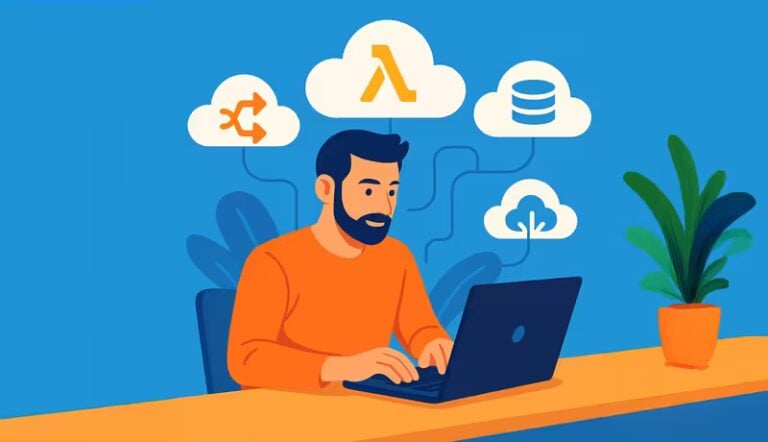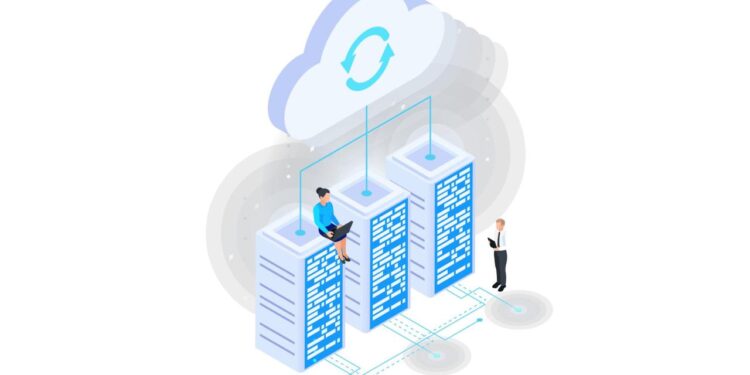The evolution of cloud computing has been a continuous journey of abstraction, moving us further away from managing physical hardware and closer to focusing purely on business logic. At the forefront of this evolution is The Rise of Serverless, a paradigm shift that is fundamentally changing how applications are built, deployed, and scaled. It’s a new era where developers no longer need to provision servers, manage operating systems, or handle scaling infrastructure. Instead, they write code that runs in response to events, and the cloud provider takes care of everything else. This article will provide a comprehensive deep dive into the world of serverless computing. We will explore its core principles, the key drivers behind its explosive growth, and the strategic implications for businesses and developers. We will also delve into the new legal, security, and architectural challenges that are defining this transformative era, offering a roadmap for navigating the future of application development.
The Essence of the Serverless Paradigm

At its core, serverless computing is a cloud-native development model that allows developers to build and run applications and services without managing servers. The name “serverless” is a bit of a misnomer, as there are still servers involved. The key is that the responsibility for managing those servers is entirely with the cloud provider.
A. Function as a Service (FaaS): This is the most common form of serverless computing. FaaS platforms, such as AWS Lambda, Google Cloud Functions, and Azure Functions, allow developers to run single, event-triggered functions in a stateless compute container.
- Event-Driven Architecture: The core of FaaS is its event-driven nature. A function is triggered by an event, such as a user uploading a photo to a storage bucket, a change in a database, or a call to an API. This allows for a highly responsive and scalable application.
- Stateless and Ephemeral: FaaS functions are typically stateless and ephemeral, meaning they only exist for the duration of a single event. This is a key design principle that allows the cloud provider to spin up and down instances of the function in real time, based on demand. This is also a significant security advantage, as a stateless container is more difficult for an attacker to compromise.
B. Backend as a Service (BaaS): BaaS is another key component of serverless architecture. BaaS platforms provide a number of pre-built services that developers can use to build their applications, such as databases, authentication, and file storage.
- No Infrastructure Management: The key benefit of BaaS is that the developer does not have to manage the underlying infrastructure for these services. The cloud provider handles everything from security to scaling. This allows a developer to focus on the business logic of their application, not on the plumbing.
- Key Examples: Examples of BaaS platforms include Amazon DynamoDB, Google Cloud Firestore, and Firebase. These platforms are a crucial part of a serverless application, as they provide the stateful data storage that a stateless FaaS function needs.
C. The Core Benefits of Serverless: The serverless model offers a number of compelling benefits for businesses and developers.
-
- Reduced Operational Costs: With serverless, you only pay for the compute time that you use, right down to the millisecond. There is no idle time, which can lead to significant cost savings.
- Scalability and Elasticity: Serverless applications are inherently scalable. The cloud provider automatically scales the number of running instances of a function to meet demand. This is a game-changer for applications that have unpredictable traffic patterns.
- Faster Time to Market: By abstracting away infrastructure management, serverless allows developers to focus on writing code. This can significantly reduce development time and accelerate a company’s time to market.
- Increased Developer Productivity: Developers are no longer bogged down by infrastructure concerns. They can spend their time on what they do best: writing code that solves business problems.
The New Challenges of the Serverless World

While serverless offers a host of benefits, it also introduces a new set of challenges that developers and businesses must be prepared to address.
A. Security and the “Shared Responsibility” Model: Security in a serverless world is a new and complex beast.
- The New Threat Landscape: The attack surface of a serverless application is different from that of a traditional application. The threats are not just to the operating system or the network but to the individual functions, the API gateways, and the third-party services that the application uses.
- Misconfiguration Risk: A simple misconfiguration of an IAM policy or an API gateway can open a digital door for an attacker. The “shared responsibility” model, which holds that the cloud provider is responsible for the security of the cloud, but the user is responsible for the security in the cloud, is a critical legal and strategic consideration.
- The “Cold Start” Problem: The “cold start” is the time it takes for a function to be instantiated after a period of inactivity. While this is a performance issue, it is also a security one, as it could be used by an attacker to launch a denial-of-service (DDoS) attack.
B. Debugging and Monitoring: The stateless and ephemeral nature of serverless functions can make them difficult to debug and monitor.
- Distributed Tracing: A traditional application has a single, consistent log file. A serverless application, on the other hand, is a collection of hundreds or thousands of individual functions, each with its own log file. This has led to the rise of new distributed tracing tools that can track a request as it moves through the different functions of an application.
- The Lack of Control: With serverless, the developer has no control over the underlying server or operating system. This lack of control can make it difficult to debug a problem that is not in the code itself.
C. Vendor Lock-in and Portability: When you build an application on a specific serverless platform, such as AWS Lambda, you are often tied to that vendor’s ecosystem.
- Proprietary APIs: The APIs and services of a serverless platform are often proprietary. This can make it difficult to move an application from one cloud provider to another.
- The “Multi-Cloud” Dilemma: The desire to avoid vendor lock-in has led to the rise of a “multi-cloud” strategy, where a company uses multiple cloud providers. However, this strategy introduces a new layer of complexity, as the security, monitoring, and development tools are all different.
D. The Legal and Compliance Frontier: The serverless revolution is creating new legal and compliance challenges.
- Data Residency: Regulations like GDPR and CCPA have strict requirements for where data can be stored. With serverless, the data may be stored in a variety of different locations, which can make compliance a challenge.
- Auditing and Accountability: The “black box” nature of serverless can make it difficult to audit an application and to establish legal accountability. If an application’s algorithm makes a discriminatory decision, who is responsible? Is it the developer? The cloud provider? The law is still grappling with these questions.
The Future of Serverless
The serverless revolution is still in its early stages, and the future will be defined by new tools, new methodologies, and a deeper integration with other cutting-edge technologies.
A. Serverless for AI and Machine Learning: The event-driven nature of serverless is a perfect fit for AI and machine learning.
- Event-Triggered Inference: A serverless function can be used to run a machine learning model in response to an event, such as a user uploading an image. This is a highly scalable and cost-efficient way to deploy an AI model.
- Data Processing Pipelines: Serverless is also being used to build data processing pipelines for AI and machine learning. A serverless function can be used to clean and transform data as it moves from one storage bucket to another.
B. The Rise of “Serverless-First” Architecture: The future of application development will be “serverless-first.”
- A New Design Philosophy: A serverless-first philosophy holds that serverless functions should be the default choice for building a new application. This forces a developer to think in terms of a stateless, event-driven architecture from the very beginning.
- Integrated Development Environment (IDE): The future will see the rise of new IDEs that are designed specifically for serverless development. These IDEs will provide a seamless experience for writing, debugging, and deploying a serverless application.
C. The Role of Open Source and Standardization: The rise of serverless has been dominated by the major cloud providers. The future will see a push for open source and standardization.
- The Open Serverless Project: The Open Serverless Project is an initiative to create a standardized framework for serverless computing. The goal is to make it easier for developers to move an application from one cloud provider to another, and to reduce the risk of vendor lock-in.
- Open Source Tools: There is a growing ecosystem of open source tools for serverless development, from frameworks for building a serverless application to monitoring tools for serverless functions.
D. The Legal and Ethical Imperatives: The serverless revolution is creating new legal and ethical imperatives.
- AI Governance: The legal system must develop a framework for governing AI systems that are built on a serverless architecture. This includes new laws on algorithmic bias, data privacy, and accountability.
- The “Digital Citizen” vs. The “Digital Business”: The serverless revolution is creating a new class of digital citizens who can build a business with a single line of code. The legal system must find a way to protect these new digital citizens from the new risks and liabilities of the serverless world.
Conclusion
The Serverless Computing Revolution is a fundamental shift in how we build and deploy applications. It is a story of a new era of innovation, where developers can focus on what they do best, and a new era of legal and ethical challenges, where the very concept of a server is being redefined. The challenges are immense, from the security of a multi-cloud environment to the legal liability of an autonomous algorithm. However, the opportunity is even greater: to build a more efficient, more scalable, and more equitable digital world. The decisions we make today will not only shape the future of serverless computing but also define our relationship with technology and the very concept of a digital business. The future of application development is here, and it is a new era of serverless innovation.












